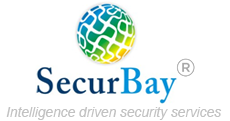How can Enterprises protect themselves from Ransomware?
Ransomware has the potential to not only lock away your firm’s critical data but also is an added expense for your firm. This digital extortion has been around on a consistent rate and is going to be that way for a long time. Ransomware malware can be in various forms including e-mail attachments, downloads, false web links, downloads and others.
Here are few listed means through which you can protect your organisation from being attacked by ransomware.
Protective measures: Ensure that your systems have ample security and anti-virus software to keep the malware at bay. Also multi-factor authentication is another great tool to rely upon. This will avoid easy infiltration. Investing in cyber security is critical for any kind of business as the malware are targeting diverse sectors and not specific to one particular industry.
Data back-up:The more back-up you have the easier it is to retrieve data and not be dependent on the cyber attackers to get the key to your encrypted files. It will ensure that there is no data loss. It is ideally suggested that the business saves data in at least 2 or 3 different locations.
Educate employees: One of the biggest reasons for ransomware is lack of awareness amongst employees. With proper training and workshop programmes this problem can be addressed. Educate them on what they have to do and monitor that the accepted policies are adhered to.
Distributed access:It is advised not to browse internet and open unknown mails from systems that are connected to servers that contains critical business related information.
Password protection:Using tougher passwords and different ones across various platforms makes it difficult for the hackers. Also regular change of the passwords is a good habit that be encouraged and prompted.
Network segmentation: VLANs — the most common segmentation technique — aren’t secure if an internal user can guess the IP addressing scheme that’s likely a mere digit increment or decrement away. Comprehensive security vulnerability assessments at regular intervals are important and must be run adequately and not merely as a routine process. The growing number of malware has made this an essential cyber security protocol.
Update software: It has been noted that malware authors generally target systems that have obsolete software with known vulnerabilities that can be easily manipulated. Some vendors release security updates on a regular basis (Microsoft and Adobe both use the second Tuesday of the month), but there are often “out-of-band” or unscheduled updates in case of emergency. Enable automatic updates if you can, or go directly to the software vendor’s website, as malware authors like to disguise their creations as software update notifications too.






Comments are closed.